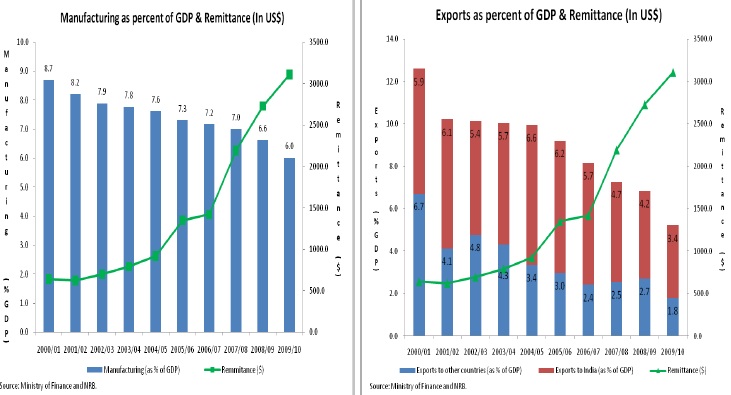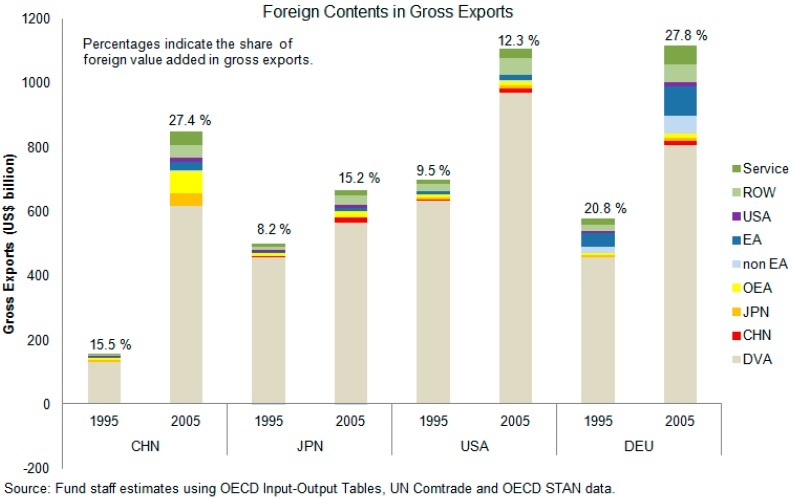This was published in Republica, August 27, 2011. For an earlier discussion on the same issue, please check this blog post.
Imprudent unions & weak industries
The economy is in such a mess that we really don’t need any more negative news to further dampen market confidence. The political instability, deteriorating industrial relations, power outages, misplaced government emphasis on cooperatives, and strikes have been already enough to discourage investors. Now, add to that list the troubles caused by perennially insatiable labor unions that are bickering with industrialists time and again over unjustified demands related to wage and compensation. The latest victim of the trade unions’ irresponsibility and misguided judgment is Surya Nepal Private Limited’s (SNPL) Biratnagar-based garment manufacturing unit, which permanently ceased production.
The blame squarely goes to the unruly and militant trade unions that think more about reaping short-term gains to its top echelons than the welfare of its members and its institutional sustainability. The irresponsible stance and acts of opportunist trade unions and its leaders have cost direct and indirect employment of over 2000 workers, mostly women. Worse, it has sent a very bad signal about market conditions. Investors, foreign and domestic, will now think multiple times before they commit to invest in Nepal, let alone in the manufacturing sector.
Established in 2004 with an investment of approximately Rs 700 million, SNPL’s garment manufacturing unit was producing popular international brands like John Players and Springwood. It was established at a time when the Nepalese garment industry was fast losing its market abroad. It was not only successful in capturing the rapidly growing Indian market, but also exported garments to the US, Canada, and the EU. Needless to say, it was also popular in the domestic market. Finally, we had a manufacturing firm that could compete in the international market and also be successful in the domestic market. This was the kind of manufacturing firm we needed to help reduce ballooning trade deficit— by increasing exports and at the same time supply goods to the domestic market to substitute imported garments.
Alas, the unruly unions cost us an established garment manufacturing firm that was providing hundreds of jobs, and contributing revenue and foreign exchange reserves. At one time the garment industry was the stronghold of our industrial sector. Now, this beleaguered sector is struggling to survive amidst loss of competitiveness and markets, mainly attributable to erosion of preferences following the expiry of Agreement on Textiles and Clothing (ATC) in 2005, and increase in cost of production due to inefficient production, power outages, frequent strikes and persistent labor unrest, which particularly intensified after 2006.
Previously, the political instability and labor union militancy in the industrial sector led to exit of multinational companies (MNCs) that have been providing hundreds of jobs and supporting numerous households. The Maoist-affiliated labor unions, through their idiotic demands, chased away Colgate Palmolive and Dabur Nepal, and briefly stopped Varun Beverage Nepal Ltd—the bottler of Pepsi—from operation, leading to withdrawal of planned investment of approximately Rs 1 billion. The trade unions have failed to acknowledge the fact that locking up management staff, threatening businessmen, smashing equipment in factories, opening camps inside industrial zones, seizing land and making a mockery of private property right, demanding compulsory donation, and having my way or the highway attitude will do nothing but erode whatever meager confidence investors have on the Nepalese economy. No wonder, Nepal is consistently ranked as one of the less investor friendly destinations to do business. Its hire and fire policies are one of the most rigid in the world.
There is nothing wrong in having strong trade unions that care about its members and the firms where they are employed. But, in our case it is not so. Two fundamental problems inflict our industrial sector: policy inconsistency and stance inconsistency. First, there is policy inconsistency on the part of government, especially with regard to the methodology of fixing wage and compensation of workers in the industrial sector. The Ministry of Labour and Transport Management (MoLTM) does not have a structured industrial conflict resolution framework. Most of the decisions are taken in an ad-hoc basis, leading to policy inconsistency. For instance, the latest industrial strike flared up after the MoLTM unilaterally revised wage and compensation to please some trade unions and its leaders. This was against the agreement between the major trade unions and industrialists and was also being looked upon by the Supreme Court. Most of the time settlement of labor disputes has happened at the whim of influential political leaders, union bosses and ministers. In SNPL’s case, persistent labor dispute over wage and compensation and demand for salary even for days not worked (the company says it followed ‘no work, no pay’ principle) culminated into lock up of management staff of the garment factory. This led to cancellation of existing and future orders and ultimately closing down of the factory.
Second, and the biggest culprit of all, are the trade unions and inconsistency in their stance on major labor issues. The top echelon of trade union has become a bunch of selfish opportunists that care more about sucking concession and donations from the industrialists to please their political masters than advocate the welfare of hardworking workers in factories. At times, the ego problem and governance issues within trade unions have led to union break-ups—the seeds of more industrial disputes. It has led to ever-changing wage and compensation demands of trade unions. Even if the industrialists agree to jack up wages and compensation, one or the other trade unions object to it. It leads to a war in pressing for higher demand, undo the agreements already sealed, and hoodwink workers by making false promise of wages increase if they go for strikes. The wage rates have been revised multiple times this year alone. The question is: What is the final deal and stance? Moreover, what is baffling is that the demands of unions are not matched by labor productivity (see ‘Union Strikes & Productivity’, Republica, 24 March, 2011). How can you increase wage and compensation if marginal labor productivity does not increase proportionally?
No matter how far the industrialists stretch their neck to reach out to unions for an amicable and sustainable solution, they are unable to do so due to the unruly and always unsatisfied trade unions and their bosses, who are bestowed with the blessing of crooked political leaders. The unions are so illogical that even when struggling factories want to close down operation after paying due compensation and swallowing ‘sunk cost’, they are arguing that investors can’t do that. This is utter nonsense. There is no relief from unions before opening, during operation and after closing down a firm. The trade unions should digest the fact that investors are here to do business, not charity. The unions are there because workers are employed by factories. The one-sided action of unions is leading to strike-unemployment cycle (see ‘Strike-unemployment cycle’, Republica, 17 December, 2009). The Maoist-affiliated trade unions are on the forefront of this destructive process.
The closure of the SNPL’s garment manufacturing unit sends a frightening message to potential investors and MNCs. This threat is never acknowledged by trade unions mired in money and politics. Worse, the government is under-acknowledging the situation right now. It will have a disastrous impact on the already stagnating economic activities. The unruly and uncompromising trade unions and their bosses should be held responsible for the loss of over 2000 jobs in the garment manufacturing plant in Biratnagar.










